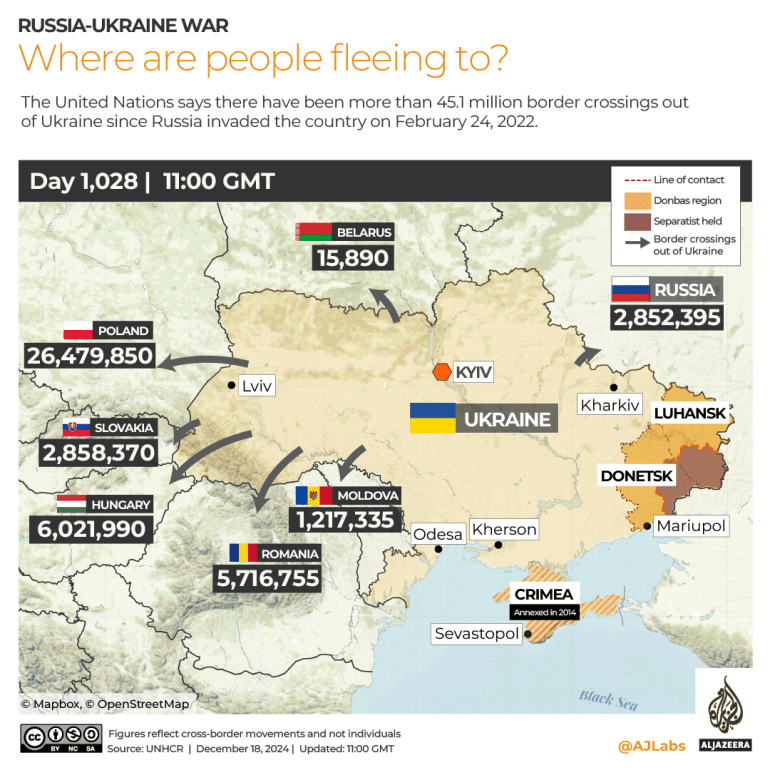North Korean soldiers began to go home in body bags over the weekend, as they fought alongside Russians in large numbers for the first time.
“Today, we already have preliminary data that the Russians have begun to use North Korean soldiers in their assaults. A significant number of them,” Ukrainian President Volodymyr Zelenskyy said on Saturday.
Ukraine’s military intelligence (GUR) reported the North Koreans were embedded with Russian Marines and Airborne troops – elite units – in the Russian region of Kursk, which Ukraine has counter-invaded.
“At one of the positions in the Kursk region, the [Democratic People’s Republic of Korea- DPRK] army soldiers were effectively ‘covered’ with [First Person View] drones,” the GUR said in a statement, estimating combined losses of Russians and North Koreans at 200 on the first day of engagement.
Al Jazeera was unable to confirm the toll.
Eight of them were reportedly killed when North Koreans mistakenly opened fire on Chechen troops belonging to the Akhmat Battalion.
“The language barrier remains a difficult obstacle to management and coordination,” said the GUR.
Many of the losses occurred as North Korean troops tried to wrest back the Russian villages of Plekhovo, 2km (1.2 miles) from the Ukrainian border, and Vorozhba and Martynovka, 10km (6.2 miles) inside Russia.
Ukraine’s “Birds of Magyar”, a Marine Corps unit specialising in unmanned aerial combat, released a video on Sunday purporting to be of North Koreans killed in Kursk. The drone footage hovered over a line of bodies with covered faces.
“After each wave, 4-5 Koreans arrive on buggies, line up mangled carcasses in a strip, as in the video, and mask the faces of the deceased,” the unit said in a statement.
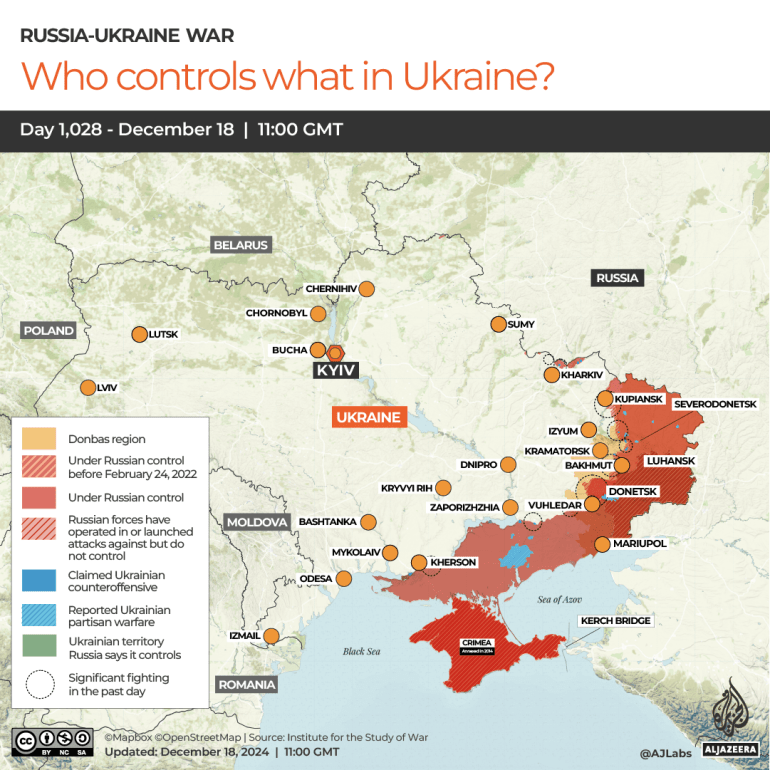
Ukraine’s other units fighting in Kursk took pride in highlighting success against North Koreans, whose presence Kyiv sees as a significant escalation of the conflict.
The Faust Unit of Ukraine’s Special Forces reported killing or wounding 33 North Koreans in Kursk using light drones.
“The Koreans, despite their rather strange walks through the fields, are trained to shoot back at drones and try to run away from them. They have not yet adopted the Russian tactic of freezing when an FPV [drone] appears,” the unit wrote on its Telegram channel.
The 8th Regiment of Ukrainian Special Forces said they had killed 50 North Korean soldiers in Kursk and wounded 47 between Saturday and Monday.
Separately, the 95th Polissia Airborne Assault Brigade claimed to have killed more than 50 soldiers in two days and wounded 100. “However, we will only claim that these were Korean mercenaries after a Korean captive tells about his difficult fate,” wrote the brigade on its Telegram page.
“After serious losses, DPRK units began setting up additional observation posts to detect drones,” said Ukrainian military intelligence on Tuesday.
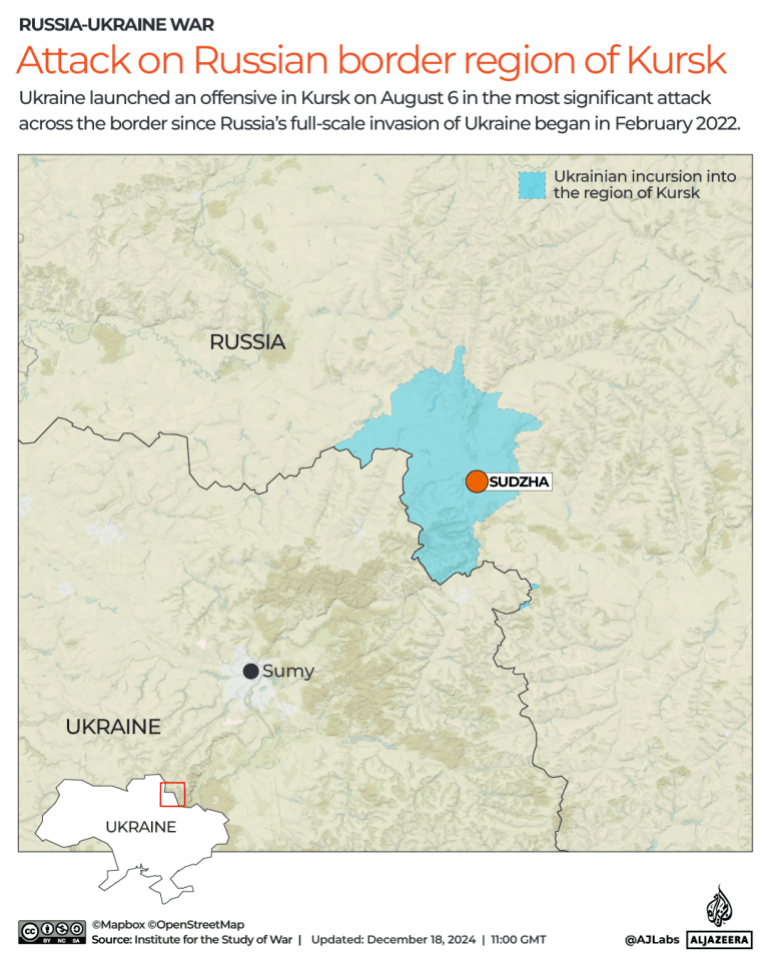
Zelenskyy posted that Russia was adopting gruesome tactics to obscure the loss of North Korean soldiers.
“After the battles with our guys, the Russians are also trying to… literally burn the faces of the killed North Korean soldiers,” he wrote on Telegram.
He added, “There is no reason for Koreans to fight and die for Putin. And even after their death, all that awaits them from Russia is mockery.”
There were no statements from Russia or North Korea on these first casualties of Korean mercenaries.
Operations on Russian soil
Ukraine also had success conducting sabotage and assassination behind enemy lines.
Overnight from Friday to Saturday, saboteurs burned a Su-30 fighter plane on the tarmac at Krymsk airfield in Krasnodar Krai.
On the same night, Ukraine struck the Steel Horse fuel production and offloading facility in Russia’s Oryol region, saying it was used to supply the military.
The previous day, they had burned and damaged three locomotives used to ferry war materiel to Ukraine.
Ukraine also conducted two high-profile assassinations.
On Tuesday morning, Ukraine’s State Security Service (SBU) assassinated General Igor Kirillov, the head of Russia’s radiation, chemical and biological protection troops. Kirillov was blown up as he walked past a parked scooter laden with explosives, on Ryazansky Prospekt in Moscow’s eastern suburbs.
Kirillov was suspected of ordering the use of chemical weapons against Ukrainian soldiers. His assistant, Major Ilya Polikarpov, was also killed.
On Thursday, Ukrainian agents were suspected of assassinating a leading Russian military scientist.
Mikhail Shatsky was found dead in Kuzminsky forest park in Moscow. He was reportedly involved in modernising Kh-59 missiles to the Kh-69 level, and writing AI software for unmanned aerial vehicles for the Russian military.
Shatsky was the head of software at Mars, the Moscow Research and Design Bureau, a subsidiary of Rosatom, the Russian state atomic energy agency.
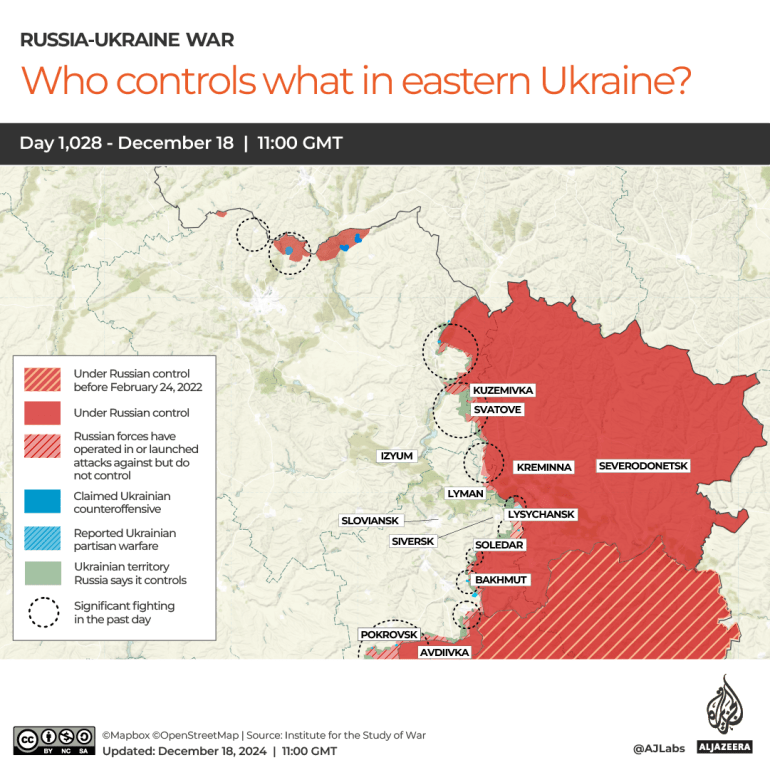
ATACMS may be doing their job
Ukraine may also have succeeded in pushing Russian aircraft far enough from the frontline to hamper its ability to launch glide bombs.
Ukraine’s general staff noted that Russia launched 431 glide bombs in the first 12 days of December, after launching more than three times that number in the first 12 days of November.
“The sharp decline in the number of strikes by guided air bombs may be explained by Ukraine’s permission to hit deep into Russia with Western long-range missiles,” wrote Ukrainian news outlet Agentstvo News, quoting OSINT analyst Oliver Alexander.
“According to him, the threat of using ATACMS forced Russian aviation to move Su-34 fighter-bombers to airfields that are more than 600km (370 miles) from the front line – outside the zone of destruction of Western missiles,” Agentstvo said.
US President Joe Biden authorised deep strikes using ATACMS on November 17, and Ukraine made its first confirmed use of the missiles two days later. It used British and French Storm Shadow/SCALP missiles the day after.
Ukrainian General Staff figures show Russian glide bomb numbers decreasing steadily in the latter half of November.
The average daily number of glide bombs in November was 110, according to the General Staff. In December it has fallen to about 40, said Agentstvo.
“Russian forces are thus currently on track to launch only a third of the total number of glide bombs that Russian forces launched in November 2024 this month,” said the Institute for the Study of War (ISW), a Washington-based think tank.
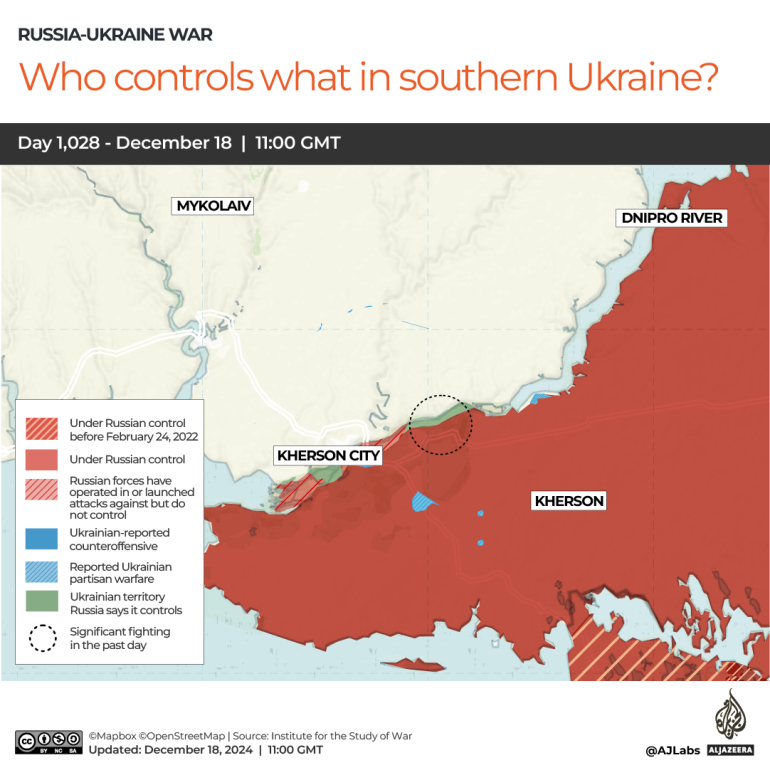
Glide bombs matter because they have an enormous blast radius and Ukraine credits them with helping Russia win the battle for the city of Avdiivka in February. Since then, Russian forces have inched forward slowly but steadily to form a 40-km (25-mile) salient west of Avdiivka.
Still, US President-elect Donald Trump said he was against Biden’s decision.
“I don’t think they should have allowed missiles to be shot 200 miles into Russia. I think that was a bad thing,” Trump said in his first post-election news conference. “I thought it was a very stupid thing to do.”
Trump has said he will try to seek a ceasefire agreement in 2025.
The ATACMS decision “removed a potential bargaining chip that President-elect Donald Trump might have used in future peace negotiations,” Demetries Andrew Grimes, a former US naval officer, aviator and diplomat who supports Trump, told Al Jazeera.
Some have criticised Biden for granting permission too late.
“The long dithering gave Russia time to move some of its logistics further away,” said Minna Alander, a research fellow at the Finnish Institute for International Affairs. “It is nevertheless important that Ukraine is able to strike into Russian territory now, as they can finally fight in a way that makes sense,” she told Al Jazeera.
Grimes believed the decision had “intensified Russia’s urgency to secure battlefield gains as the Russians now face the threat of long-range attacks on critical military infrastructure”.
The ISW has estimated Russia doubled its rate of advance in November compared with October, claiming an average of 27 square km (10 square miles) a day. It has clawed away a total of 2,356 square km (910 square miles) of Ukrainian land in 2024, the ISW said.
Russian President Vladimir Putin on Monday thanked the armed forces for “liberating” 189 settlements this year, during a meeting of the board of the Ministry of Defence. He said it had been “a landmark year in achieving the goals of the special military operation”.
The latest use of ATACMS came on the morning of December 11, when six missiles attacked the Russian airfield at Taganrog, a move against which “there will be a response,” said Kremlin Spokesman Dmitry Peskov.
Russia’s war from the air
Russia has liberally launched air attacks at Ukraine’s cities as well as its military.
Russia launched what ISW called its largest-ever aerial attack against Ukraine on Friday, involving 94 missiles and 193 kamikaze drones.
Ukraine shot down 81 of the missiles and 80 of the drones, disorienting another 105 with electronic warfare systems, but Ukrainian energy operator DTEK reported heavy damage to five of its plants.
“Each missile targeted a particular energy facility,” said Zelenskyy. “The strike was timed to coincide with the cold snap. This is a deliberate, cynical Russian terror aimed specifically at our people.”
Zelenskyy told a meeting of the Joint Expeditionary Force that Ukraine needed 12-15 air defence systems to protect its skies over and above the five promised at the Washington NATO summit in July, upping the number for the second time in two weeks.
On December 10 Zelenskyy asked for 10-12 Patriot systems, up from the minimum of seven he had sought in April. His latest figure does not refer to Patriot systems in particular.
In a meeting with Polish Prime Minister Donald Tusk, Zelenskyy ruled out “just a pause in hostilities… just something temporary or uncertain. We need a strong shared position – of all partners – and we need genuine peace.”
